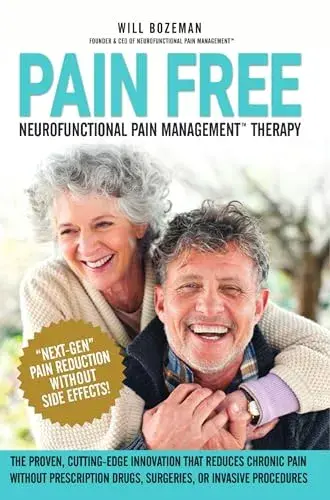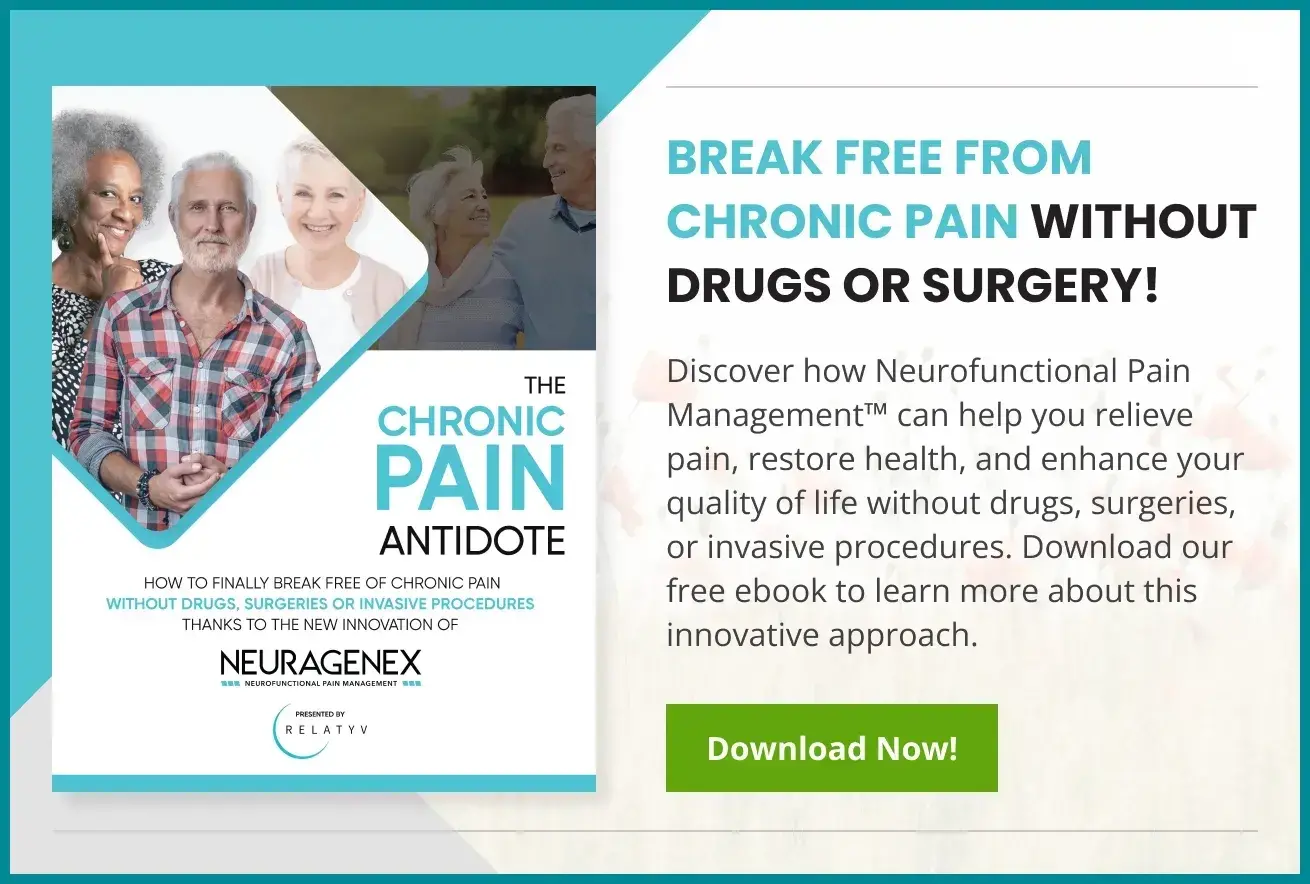Knee Pain

A Comprehensive Guide On Electrical Stimulation Therapy For Knee Pain
Read More
November 21, 2022
We can all attest to the vital importance of joint movement and flexibility, especially in the lower extremities, and there is no denying we all heavily rely on our larger joints like the knee, hip, and ankle joints to accomplish regular activities that matter to us.
The knee joint is one of the most – if not the most – crucial joints that we use every day as we rely on our legs to accomplish even the most basic daily tasks. A healthy knee is highly flexible, permitting full range of movement in the legs. The movement is supported by the group of muscles and tendons that surround the knee, maintaining normal joint alignment.
As we age, the risk factors for knee pain increase. Flexibility may gradually decrease, reducing range of motion in the knee and making movement more rigid. If the knee joint becomes painful, the consequences of this pain can extend to the rest of our body as we accommodate the pain by walking differently or adjusting our posture and balance. Or worse, we just stop moving around altogether. Ultimately, quality of life is greatly affected by knee pain and our health continues to go downhill because of chronic knee pain.
With over 100 million Americans struggling with acute or chronic knee pain, there is little doubt that this condition is among the most widespread musculoskeletal issues in the U.S. It is important to understand “knee pain” and to understand the cascade of symptoms related to pain in the knee area.
A lot of the complications of knee pain are directly linked to what part of the knee is injured or damaged. For example, a locking, popping, and catching sensation is common for torn ligaments, while stiffness and grinding noises are telltale signs of arthritis.
Some of the symptoms most commonly associated with knee pain include:
Visible deformities: Although rare, knee pain and injuries can cause visible deformities and bulges, such as in the case of kneecap fractures or Baker’s cysts.
There are several other conditions that can affect knee joint health, including overuse and dislocation. The severity and location of the pain largely depends on the knee structure that is affected. The following are some of the common causes of knee joint pain:
Knee arthritis is an inflammatory joint disease that affects over 14 million people in the U.S., making it one of the leading causes of knee pain. Arthritis is currently one of the major causes of disability in the elderly in the U.S. There are several different types of arthritis, including osteoarthritis, gout, and rheumatoid arthritis. Arthritis can be caused by several factors, including overuse, degenerative diseases, excessive quantities of uric acid in the body, or autoimmune conditions.
Over time, arthritis causes breakdown of the cartilage in the knee joint – the soft tissue in the joint that “cushions” movement and protects against friction and stress. As a result, arthritis can lead to pain, grinding sounds when moving, reduced range of motion, and, if left untreated, soft and hard tissue damage.
A dislocation occurs when the bones in the knee joint – the thigh bone (femur) and the shinbone (tibia) – shift out of place and become misaligned. The dislocation might also affect the kneecap (patella) if it gets knocked out of place.
Knee dislocations are often a consequence of direct trauma, injury, or collisions that involve the knee. They can be extremely painful and can affect the surrounding structures (i.e., ligaments and tendons).
Repeated stress to the knee joint can lead to painful overuse injuries, such as tendinopathy or strains. For example, overuse injuries can affect the tendons and ligaments in the knee.
You might be at greater risk of overuse knee injuries if you perform repeated movements or activities such as jumping, skiing, or cycling. Being obese or overweight might also put excessive stress on the knee when walking, standing, or jogging, thus leading to the wear and tear of soft tissue.
Posture impacts how external forces such as stress and gravity affect the knee joint. Bad posture can affect how your body bears its weight, thus affecting the neck and hips, which adds unnecessary strain to certain areas of the knee. This can lead to mechanical issues, such as knee valgus (knock-knees) and knee varus (bowed legs).
These difficulties cause stress and friction to the knee joint during certain movements, thus affecting the cartilage and bones over time. If left untreated, bad posture, misalignment, and mechanical issues can make knee movements painful and restrict the range of motion.
There are many different causes of knee pain, from overuse to dislocation. As a result, an accurate diagnosis is critical before starting any treatment to ensure the underlying cause of the pain is addressed. Healthcare providers will often complete a multitude of tests to thoroughly assess the knee before making a diagnosis.
These include:
Blood tests: Blood tests might also be required to exclude causes such as autoimmune diseases.
The best treatment for knee pain is often determined by a thorough assessment. However, in most cases, patients are recommended one of the treatment options below (or a combination of them):
Some common knee conditions, such as osteoarthritis, can affect the daily life of a patient for 30 years or more, making it of paramount importance to look beyond NSAIDs as a long-term treatment solution for knee pain.
Regardless of the cause of the knee pain, patients can be assured that there are a range of treatment options that can help mitigate the pain, increase flexibility, and restore function in the knee.
Because one of the most common reasons for knee pain is the inflammation of muscles, tendons, and ligaments, the most apparent solution is to reduce the inflammation.
Any patient familiar with muscle soreness will know that icing the affected area can result in a temporary decrease in inflammation and pain.
However, the natural next step for managing inflammation is NSAIDs. When these two treatment options are used in tandem, they can provide a welcome relief for patients suffering from knee pain. However, these two treatments are not without drawbacks and limitations.
When it comes to the use of NSAIDs as a supplement to other forms of treatment, there are several side effects that should be considered and understood by patients.
NSAIDs are predominantly recognized as a safe treatment option in the short term, and are therefore readily available to most of the population. In fact, NSAIDs can be helpful for a short period of time whilst undergoing other treatments, such as Neurofunctional Pain Management.
However, while these drugs can provide temporary relief, NSAIDs should not be used as a long-term treatment for pain, as the risk of developing a dependency on these drugs should not be dismissed.
The term ‘dependency’ is often associated with illicit drug use and fatal outcomes. However, dependency is also used to describe overuse of medication leading to other forms of medical distress. In fact, a dependency may not always be life-threatening, although the adverse effects can be serious enough that hospitalization is necessary. Understanding this definition can help patients mitigate their risk and identify warning signs before care becomes critical.
The mild nature of NSAIDs can lead to a stronger desire for increased quantities of drugs. In a 2020 study, Dr Sharma and associates concluded that “although NSAIDs are among the most commonly used drugs, their use is associated with a broad spectrum of side effects, which may include gastrointestinal and cardiovascular toxicity” (2020).
There are several pros and cons of NSAIDs treatment. As we move on and explore additional treatment options for knee pain, patients should consider them objectively, recognizing both the pros and cons of each treatment. While patients may experience the positive effects of NSAIDs, they should also consider the potential side effects.
Relatyv offers the best treatment for knee pain with its Neuralgesia treatment program. Neuralgesia is the unique protocol used by Relatyv to treat a wide range of chronic pain conditions. Relatyv is the founding medical group that is pioneering the field of Neurofunctional Pain Management.
Neurofunctional Pain Management is a specialized treatment program that uses high-pulse electrical stimulation in combination with specialized hydration therapy to relieve pain through multiple combined physiologic effects. Pain neuron sustained depolarization and reduced chronic systemic inflammation are two of the core components of chronic pain relief under the Neurofunctional Pain Management treatment model.
Many patients experience symptom relief after only one treatment session and report that life is markedly better after only a few weeks of the Neuralgesia treatment protocol. Relatyv is pioneering the field of Neurofunctional Pain Management with the mission to relieve pain, restore health, and magnify the quality of life without drugs, surgery, or invasive procedures.
When it comes to knee pain, treatment options with Relatyv should be your first consideration. Understanding that you have non-surgical, non-invasive, non-pharmaceutical, and non-chiropractic treatment options will be the greatest ally in your journey of pain relief. Our vision is to be the first thought, first choice, and first step in the journey of chronic pain relief.
About the Author
Will is a healthcare executive, innovator, entrepreneur, inventor, and writer with a wide range of experience in the medical field. Will has multiple degrees in a wide range of subjects that give depth to his capability as an entrepreneur and capacity to operate as an innovative healthcare executive.
Share on Social Media




You can see how this popup was set up in our step-by-step guide: https://wppopupmaker.com/guides/auto-opening-announcement-popups/
You can see how this popup was set up in our step-by-step guide: https://wppopupmaker.com/guides/auto-opening-announcement-popups/
Neurofunctional Pain Management Overview
Symptoms
Conditions Treated
Treatments
Articles by Category
Locations
Colorado
Wisconsin
Georgia
Hiram
Lawrenceville
Marietta
Powder Springs
Texas
Waco
Victoria
Illinois
Buffalo Grove
New Lenox
St. Charles
Arizona
Tucson
Waddell
Arlington
Avondale
Buckeye
Superior
Mesa
Palo Verde
Morristown
Tempe
Chandler
Anthem
Eloy
Florence
Fort McDowell
Phoenix
El Mirage
Coolidge
Gilbert
Arizona City
Casa Grande
Casa Blanca
Aguila
Sacaton
Apache Junction
Kearny
Stanfield
Goodyear
Litchfield Park
Alabama
Arkansas
California
Florida
Idaho
Indiana
Iowa
Kansas
Louisiana
Maryland
Michigan
Rhode Island
Minnesota
Mississippi
Nevada
New Jersey
New Mexico
North Carolina
Ohio
Pennsylvania
South Dakota
Tennessee
Utah
Virginia
Washington

